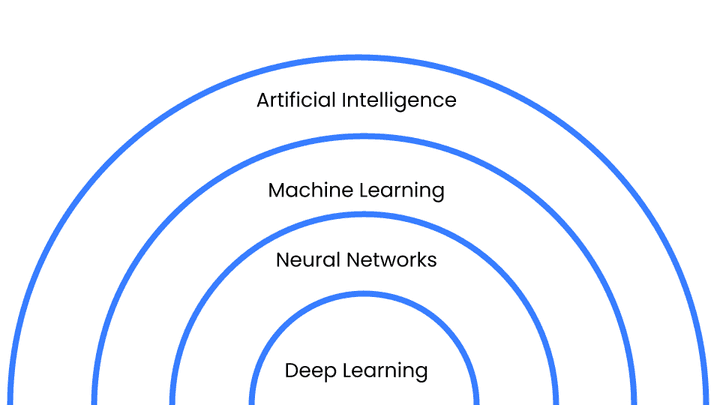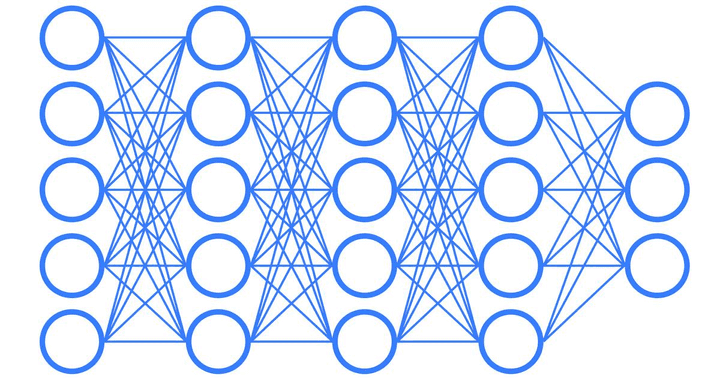As Artificial Intelligence applications get more popular, new buzzwords become a part of everyday language. Although they may sound confusing, everything starts with Statistics - an old friend or enemy. Artificial Intelligence, Machine Learning, Deep Learning, and Neural Networks are all related fields that deal with data and algorithms and use statistical methods.

What’s Artificial Intelligence?
Artificial Intelligence, or AI, deals with the simulation of human intelligence in machines. AI enables them to perform tasks that typically require human intelligence, such as understanding, problem-solving, decision-making or learning. AI algorithms rely on statistics, finding patterns in data structures to make predictions.
What’s Machine Learning?
Machine Learning (ML) and Artificial Intelligence are not the same. Machine Learning is a subset of AI, focusing on building algorithms and models that can automatically improve and learn from data. ML teaches machines to make decisions even if they haven’t seen that specific case.
What’s Supervised Learning?
Supervised Learning is a subset of Machine Learning and the simplest method to train an algorithm. Showing the input and output relationship is the standard approach to teaching algorithms the right decisions. Once a model learns what to pick in various situations, it can make decisions in new cases.
Think about learning a new language. We find patterns, such as the structure of the simple future tense: will + verb, and practice with example sentences. Then we infer the tense even if it’s a new sentence, i.e. not from the training set.
What’s Unsupervised Learning?
Unsupervised learning is another subset of Machine Learning. It deals with teaching machines patterns from untagged data.
Think about a toddler learning a new language. They do not know what simple future tense is, in a way adults learn in a classroom. They understand it without being trained on tagged data (will + verb).
What’s Reinforcement Learning?
Reinforcement learning refers to training by interacting with the environment. Algorithms receive positive or negative rewards based on their actions and refine their responses to maximize positive rewards.
Imagine a dog learning a new trick. Most dogs learn the commands when humans give them a treat when they obey and ignore them when they don’t.
What are Neural Networks?
Neural Network(s) is a type of Machine Learning. It has networks of interconnected nodes that mimic the structure and function of the human brain. These connected nodes work similarly to neurons. They process information by responding to external inputs and relaying information between units to derive meaning from undefined data.
What’s Deep Learning?
Deep Learning is a type of Machine Learning that involves the use of Neural Networks. Deep Learning uses large Neural Networks with multiple layers, and the "deep" in the name refers to those layers. Networks’ ability to learn increases with the layers. Deep learning can work with unstructured data and enables the use of large data sets, hence also known as scalable machine learning.
It may sound contradictory. However, Deep Learning-powered models do not have to be large, despite large training data sets. Picovoice’s speech-to-text engines, with cloud-level accuracy and more than 300,000 words in their lexicon, are still around 30MB.

Deep Learning or Deep Neural Networks (DNN) is the latest approach to solving complex AI challenges such as speech recognition or visual recognition. However, it doesn’t mean that every voice AI company uses Deep Learning to train their models. For example, Kaldi, one of the most famous speech projects, if not the most famous one (Sorry Whisper. Kaldi has been around for a long while and enabled many commercial projects, including Amazon’s Alexa), does not leverage Deep Learning. Deep Learning was not available when Kaldi was born.
In Artificial Intelligence, the state-of-the-art changes constantly. If a voice AI vendor is still using, or even worse, bragging about, its 5-year-old technology, take it as a red flag. Use Picovoice’s open-source benchmarks to compare alternatives instead of relying on marketing claims.







